Modular Kitchen Design Ideas : Creative and Functional Design Ideas for Various Kitchen Spaces
Introduction
In the modern home, the kitchen is more than just a place to cook meals; it’s the heart of the home, where families gather and memories are made. The trend of modular kitchens has gained immense popularity due to their sleek design, functionality, and the efficient use of space. Modular kitchens are composed of pre-made cabinet parts that are assembled to create a customized kitchen layout. This article explores creative and functional design ideas for various kitchen spaces, ensuring your kitchen is not only beautiful but also highly efficient.

1. Understanding Modular Kitchens

Before diving into design ideas, it’s essential to understand what modular kitchens are. Modular kitchens consist of modules or units of standard sizes that can be configured and reconfigured according to the space and user requirements. These kitchens are designed to optimize space, enhance functionality, and provide a contemporary look.
2. Benefits of Modular Kitchens

a. Space Optimization
Modular kitchens are designed to make the most of the available space. Each module is crafted to fit seamlessly into the designated area, ensuring no space is wasted.
b. Customization
One of the significant advantages of modular kitchens is the high level of customization they offer. You can choose the layout, materials, colors, and finishes to match your preferences and kitchen requirements.
c. Ease of Installation
Modular kitchens are easy to install compared to traditional kitchens. The pre-fabricated modules are assembled on-site, reducing the time and hassle involved in setting up a kitchen.
d. Functionality
These kitchens are designed to enhance functionality with efficient storage solutions, easy access to kitchen items, and ergonomic designs that make cooking a pleasurable experience.
3. Popular Layouts for Modular Kitchens

a. L-Shaped Kitchen
The L-shaped kitchen is perfect for small to medium-sized spaces. This layout maximizes corner space and provides ample counter space, making it ideal for multitasking.
b. U-Shaped Kitchen
U-shaped kitchens offer a lot of storage and counter space, making them suitable for larger kitchens. This layout surrounds the cook on three sides, providing easy access to all areas.
c. Parallel or Galley Kitchen
A parallel kitchen features two long workspaces that face each other. This layout is efficient and provides plenty of storage, making it ideal for narrow spaces.
d. Island Kitchen
Island kitchens are great for open-plan homes. The island serves as an additional workspace, dining area, or storage unit, enhancing the kitchen’s functionality and aesthetic appeal.
e. G-Shaped or Peninsula Kitchen
Similar to the U-shaped kitchen, the G-shaped kitchen includes a partial fourth wall or peninsula. This layout offers more counter space and is ideal for larger families.
4. Material Choices for Modular Kitchens

a. Cabinet Materials
The choice of materials for cabinets can significantly impact the look and durability of your kitchen. Popular options include plywood, MDF (Medium Density Fiberboard), and HDF (High-Density Fiberboard).
b. Countertop Materials
Countertops are available in various materials like granite, quartz, marble, and laminate. Each material has its pros and cons, so choose one that fits your aesthetic preferences and budget.
c. Backsplash Materials
Backsplashes not only protect the walls from splashes but also add a decorative element to the kitchen. Common materials include tiles, glass, stainless steel, and stone.
5. Color Schemes and Finishes
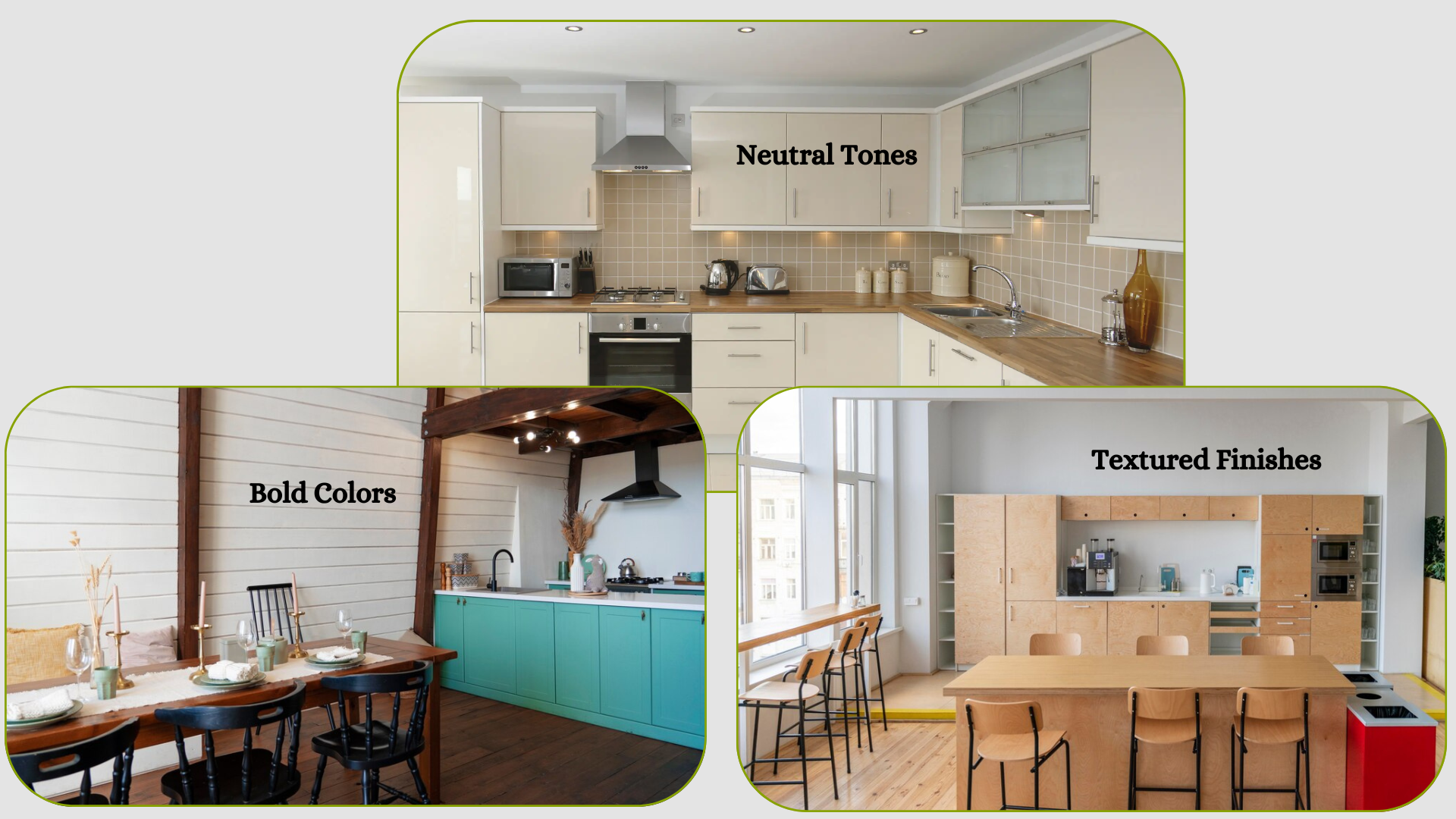
a. Neutral Tones
Neutral tones like white, beige, and gray create a clean, timeless look that can make your kitchen feel more spacious.
b. Bold Colors
Incorporating bold colors like navy blue, emerald green, or even black can add a dramatic effect and make your kitchen stand out.
c. Textured Finishes
Textured finishes like matte, gloss, or wood grain can add depth and interest to your kitchen design.
6. Innovative Storage Solutions
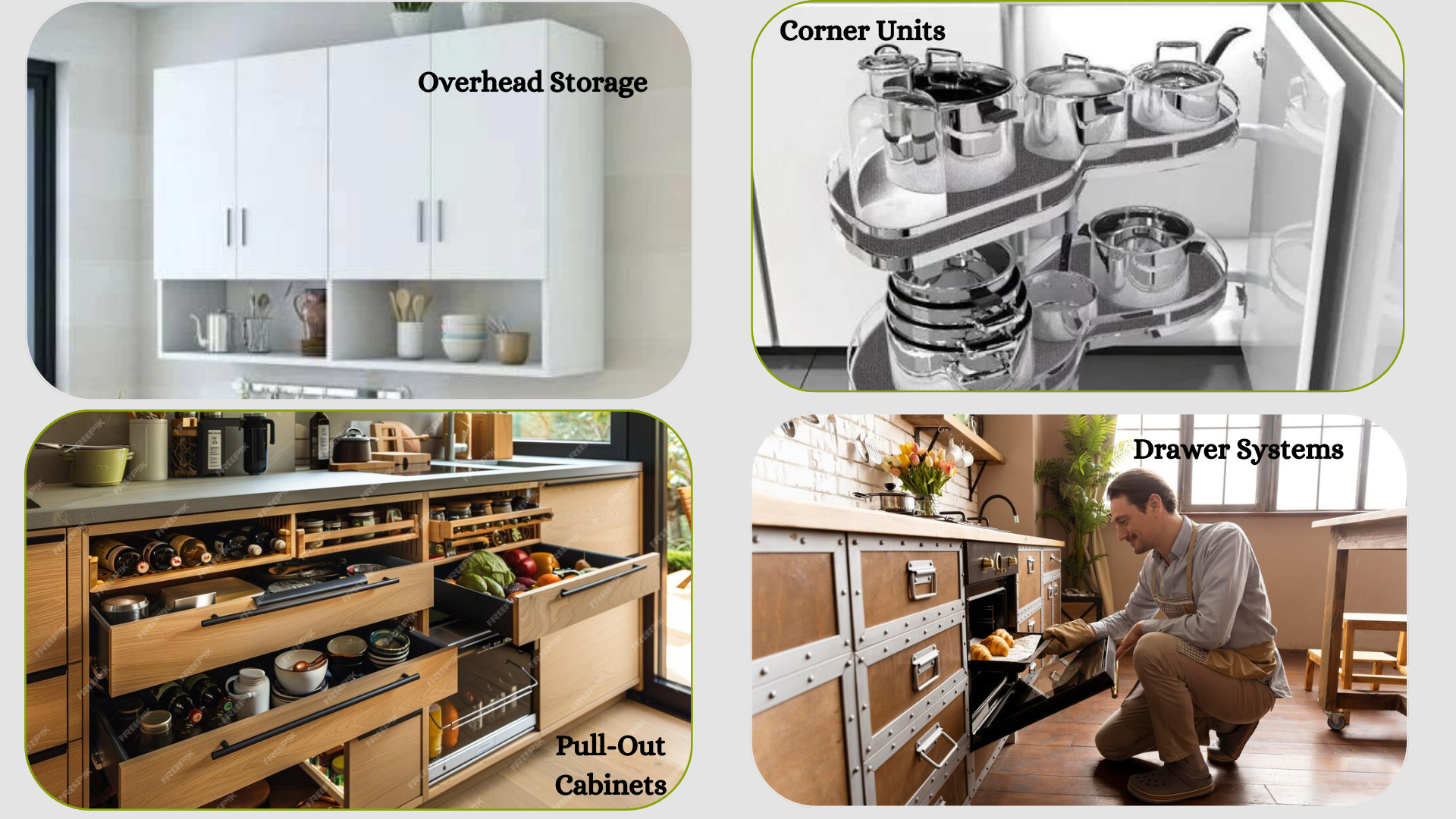
a. Pull-Out Cabinets
Pull-out cabinets provide easy access to items stored at the back, making them perfect for storing pots, pans, and other cookware.
b. Corner Units
Corner units like carousel units or lazy Susans make use of corner spaces that are often difficult to access.
c. Drawer Systems
Innovative drawer systems, including deep drawers for pots and pans and slim drawers for cutlery, enhance the organization and functionality of the kitchen.
d. Overhead Storage
Overhead cabinets and shelves provide additional storage space for items that are not used daily.
7. Appliances in Modular Kitchens
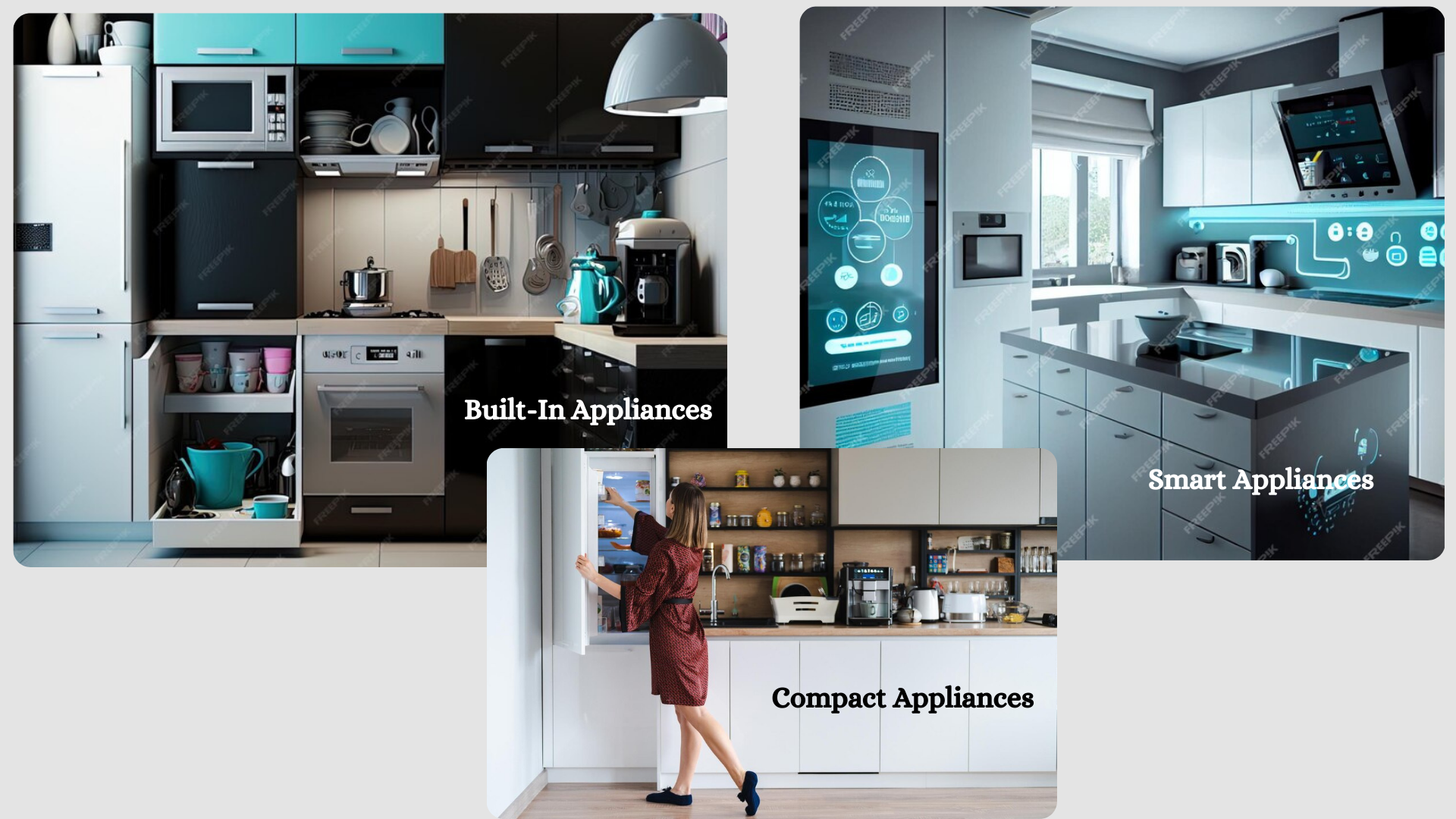
a. Built-In Appliances
Built-in appliances like ovens, microwaves, and dishwashers integrate seamlessly with the kitchen design, providing a sleek and modern look.
b. Smart Appliances
Incorporating smart appliances that can be controlled via smartphone apps adds convenience and efficiency to the kitchen.
c. Compact Appliances
For small kitchens, compact appliances like slim refrigerators and microwaves can save space without compromising on functionality.
8. Lighting Solutions for Modular Kitchens
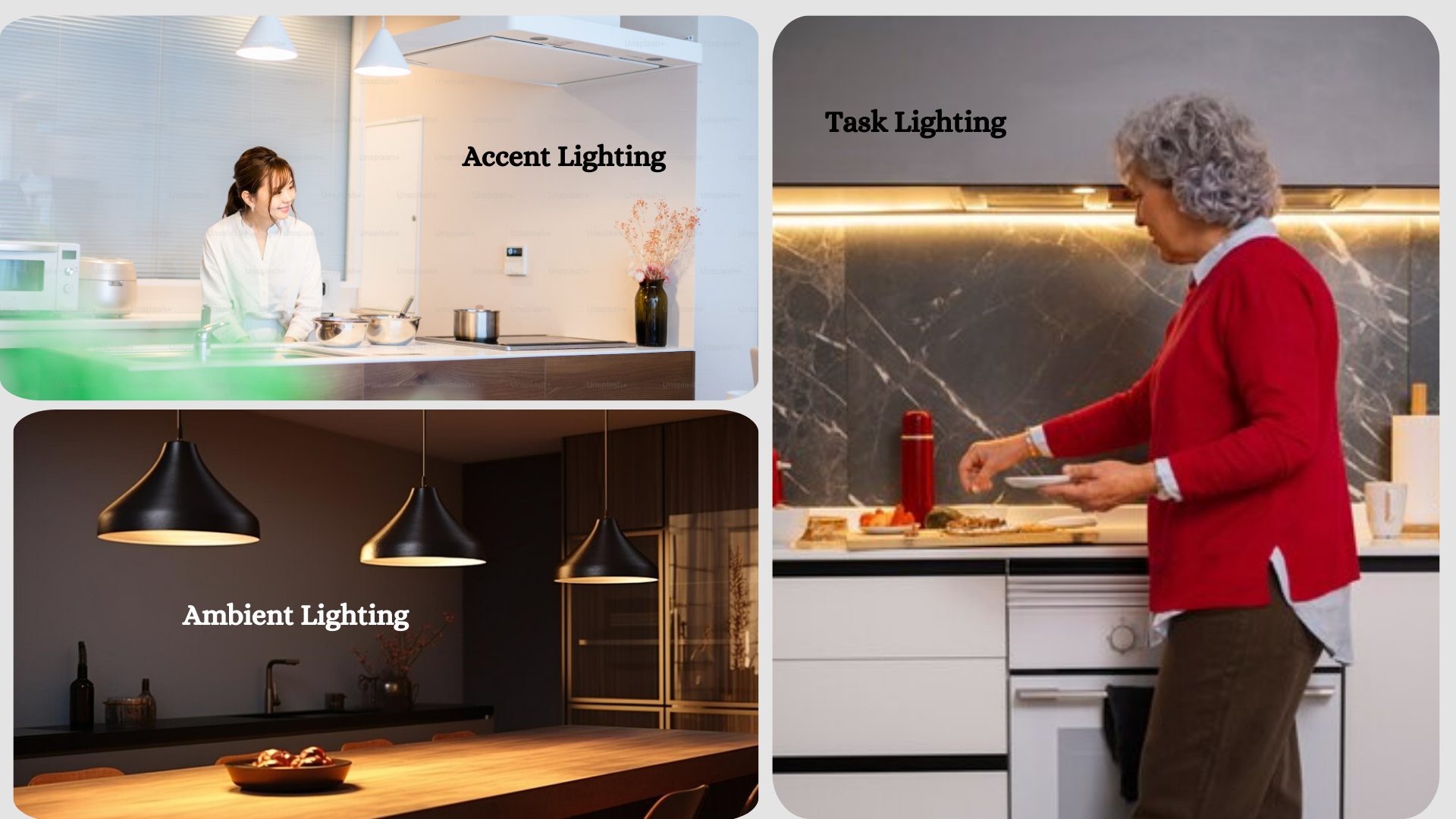
a. Task Lighting
Task lighting, such as under-cabinet lights, ensures that work areas are well-lit for cooking and food preparation.
b. Ambient Lighting
Ambient lighting creates a warm and inviting atmosphere in the kitchen. Pendant lights, recessed lighting, and chandeliers are popular choices.
c. Accent Lighting
Accent lighting highlights specific areas or features of the kitchen, such as a beautiful backsplash or a display cabinet.
9. Eco-Friendly Design Ideas
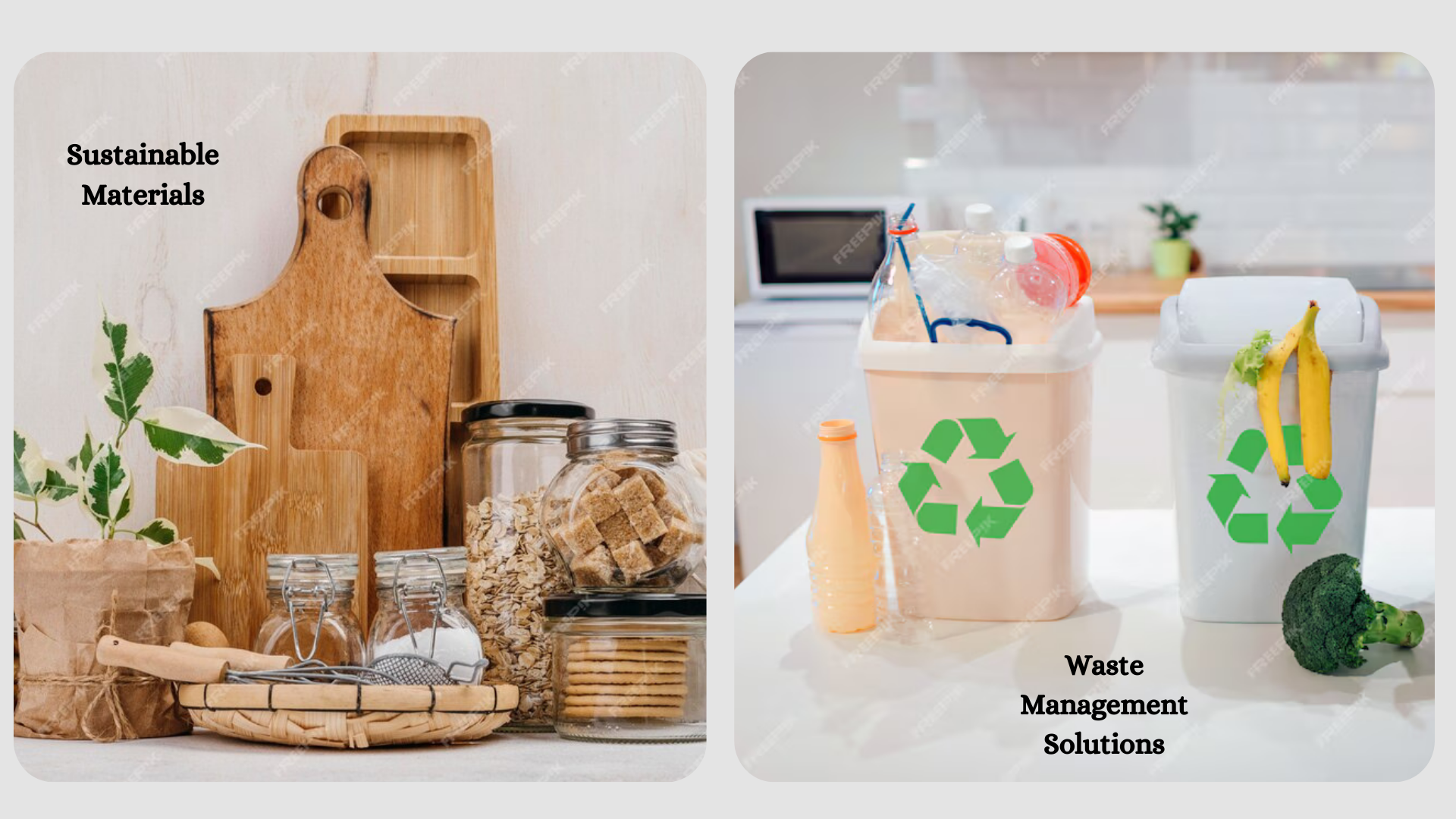
a. Sustainable Materials
Using sustainable materials like bamboo, reclaimed wood, or recycled glass for cabinets and countertops reduces the environmental impact.
b. Energy-Efficient Appliances
Opt for energy-efficient appliances that consume less electricity and water, contributing to a greener kitchen.
c. Waste Management Solutions
Incorporate waste management solutions like built-in recycling bins and composting units to promote eco-friendly practices in the kitchen.
10. Personal Touches in Modular Kitchens

a. Decorative Elements
Add personal touches with decorative elements like artwork, plants, and unique kitchen accessories.
b. Custom Hardware
Choose custom hardware like cabinet handles and knobs that reflect your style and add a unique touch to your kitchen.
c. Open Shelving
Open shelving can display your favorite dishes, cookbooks, and decorative items, adding personality to your kitchen.
Conclusion
Designing a modular kitchen requires a balance of aesthetics, functionality, and personal preferences. By considering various layouts, material choices, color schemes, and innovative storage solutions, you can create a kitchen that is both beautiful and highly efficient. Whether you have a small apartment kitchen or a spacious open-plan kitchen, modular designs offer flexibility and customization to suit any space. Embrace these creative and functional design ideas to transform your kitchen into the heart of your home.
